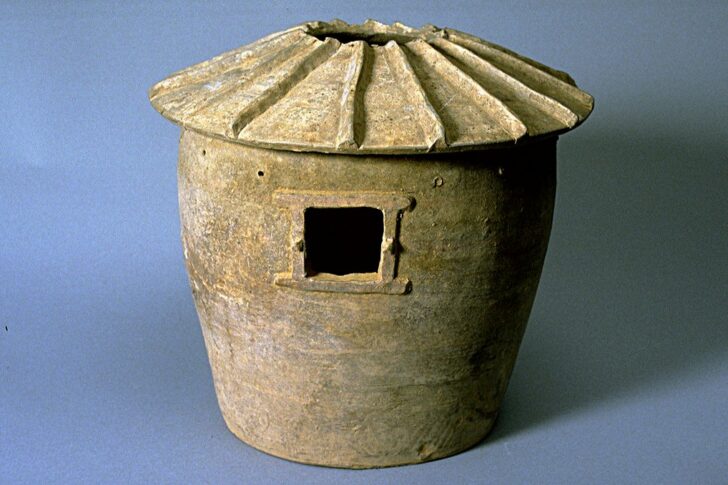Model of a granary
Chinese

Description
Subject Matter:
By the Western Han dynasty, basic household bowls, plates, basins, jars, etc. were produced in great quantity, not only for use in daily life, but also specifically for tombs as mingqi (明器), literally "bright objects," or grave goods, as a way to provide for the deceased. These mingqi included everything one would need during the afterlife, naturally, these objects reflected daily life during the Han. Mingqi could include houses, towers, gates, granaries, livestock pens, chicken coops, wells, cooking stoves, storage vessels, dishes, incense burners, lamps and figures such as horses, dogs, anthropomorphic animals, and people such as officials, guardians, servants and entertainers, and more. Tombs could contain anywhere from a few, to several hundred ceramic mingqi items.
Granaries such as this were symbolically storing grain for the deceased's afterlife, however, today these architectural models provide insight as to what granaries looked like and how buildings were constructed during the Han Dynasty.
Physical Description:
A gray earthenware cylindrical granary, with a framed, pierced window, and a round hipped and peaked roof with a central opening and spoke-like roof ridges. The model is covered in a lead green glaze, with iridescence and calcification.
Usage Rights:
If you are interested in using an image for a publication, please visit https://umma.umich.edu/request-image/ for more information and to fill out the online Image Rights and Reproductions Request Form.